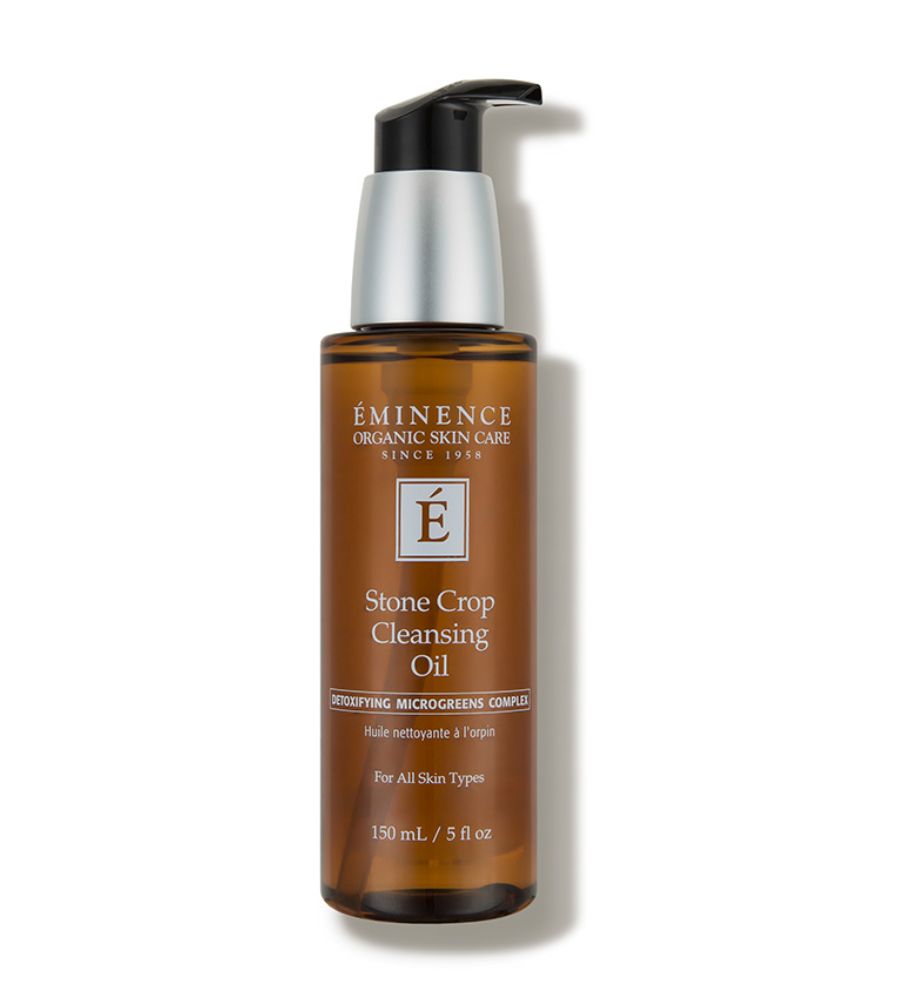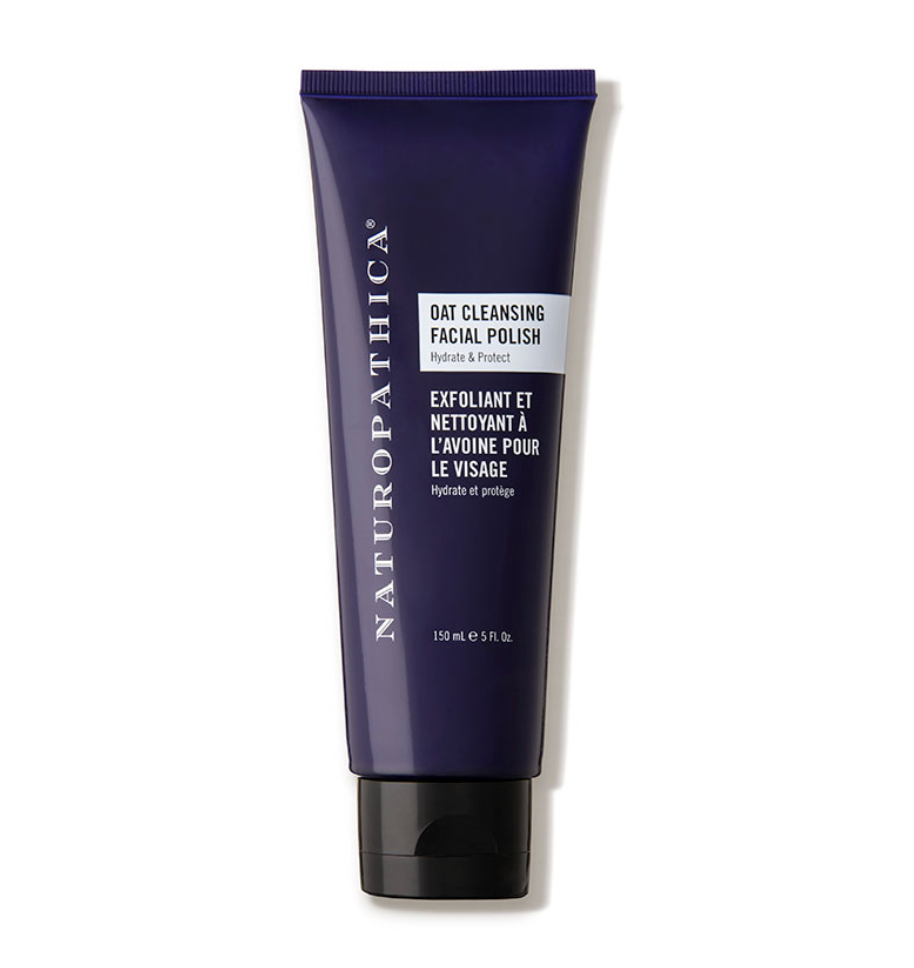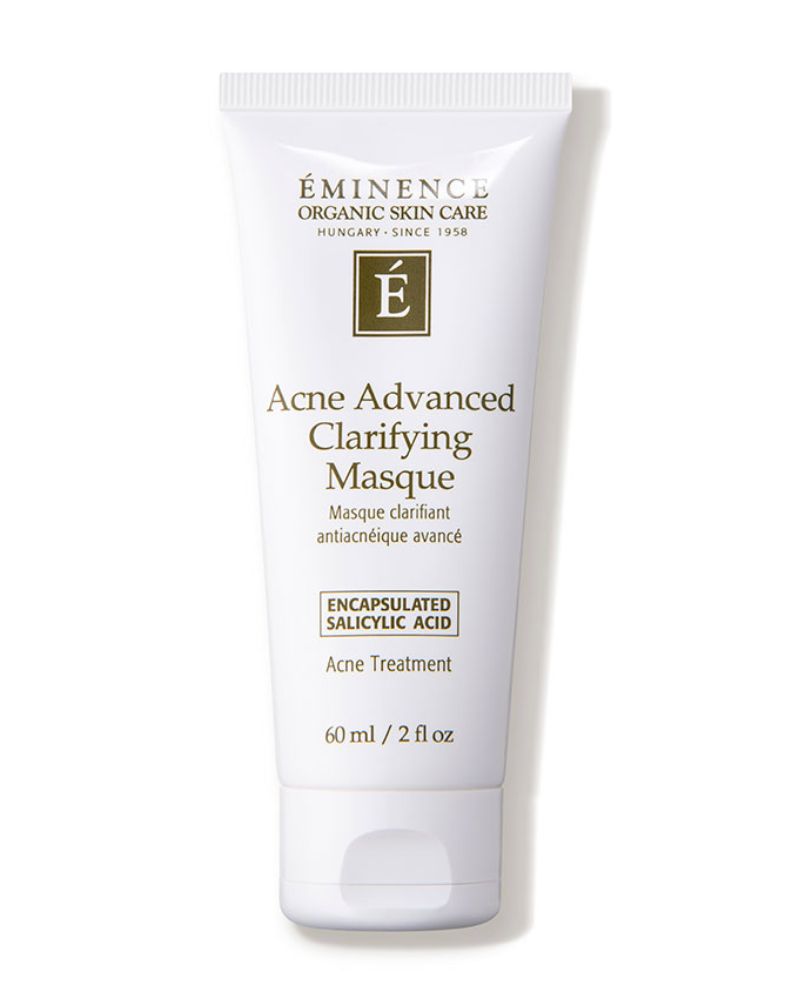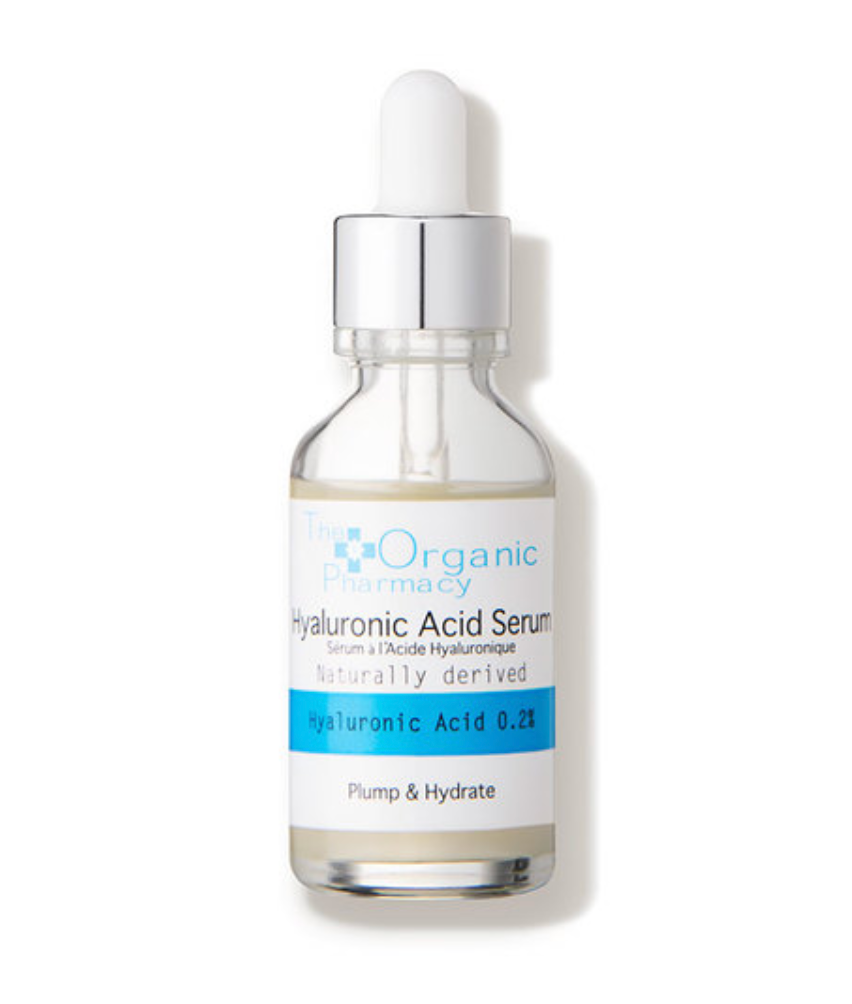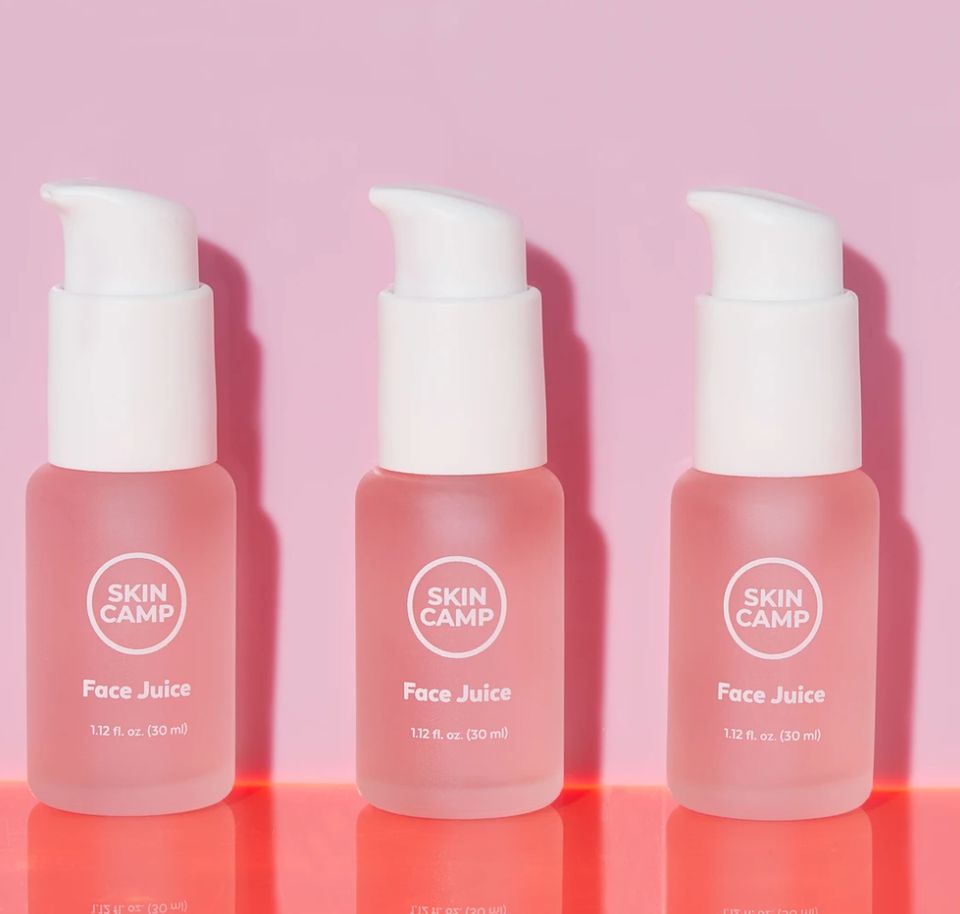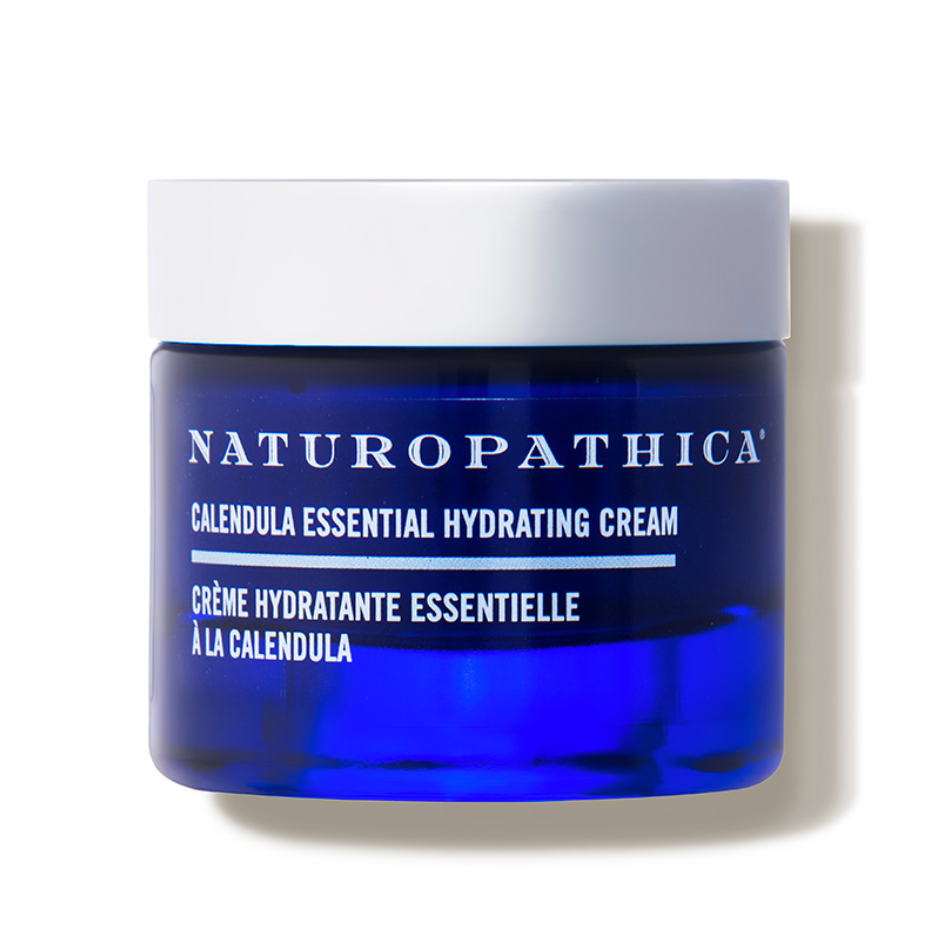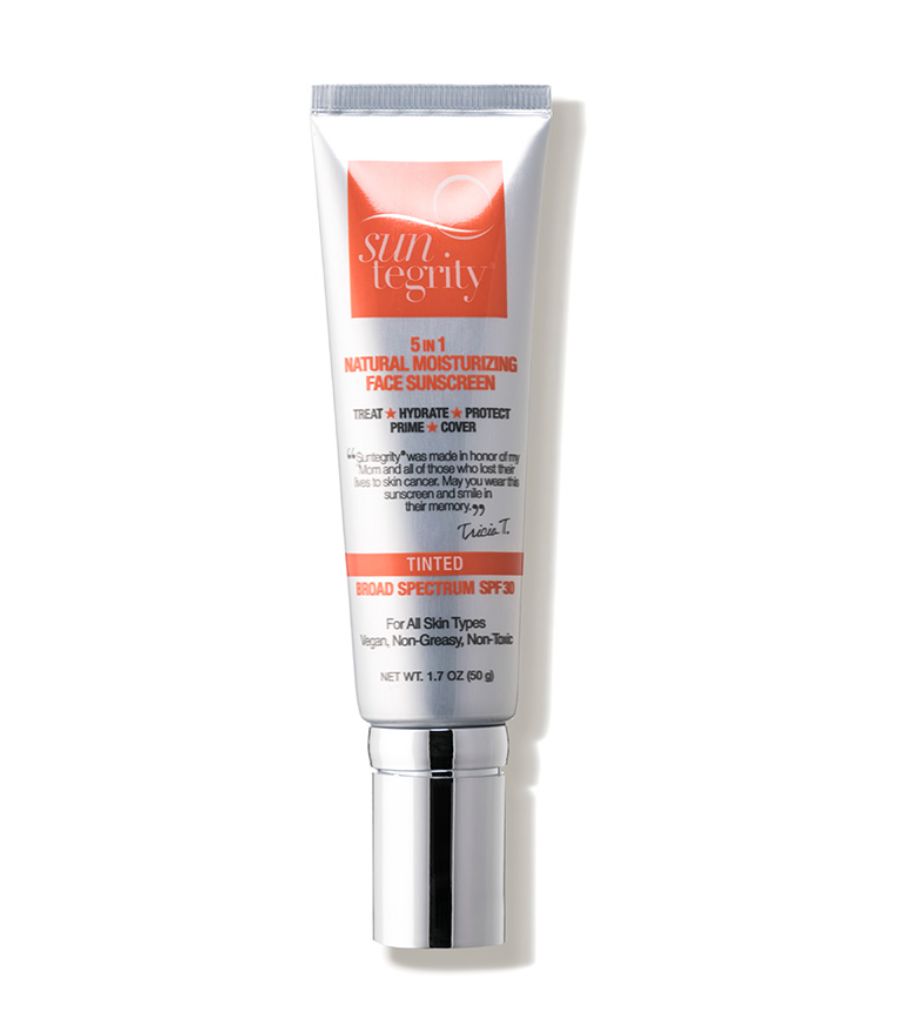HuffPost may receive a share from purchases made via links on this page. Prices and availability subject to change.
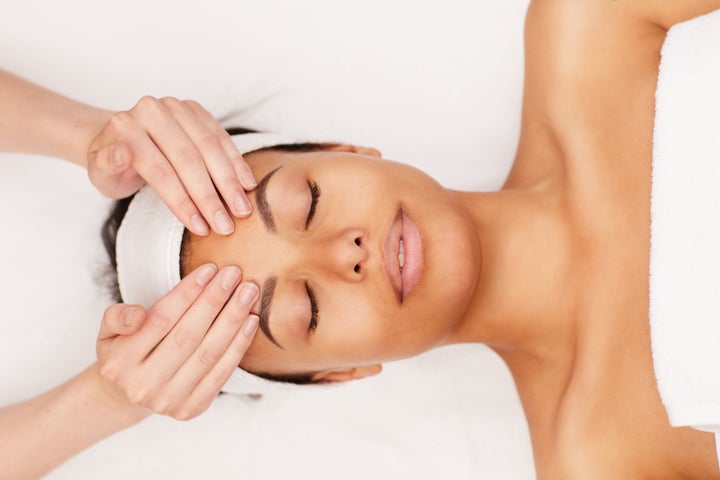
We miss our family, we miss our friends and many of us miss our facialists, as social distancing has forced us to forgo our favorite beauty appointments. We’ve learned how to safely remove a gel manicure, how to maintain our eyebrows on our own and how to dye our hair at home.
A facial might be a less frequent service you indulge in, but now that many of us are wearing less makeup around the house and sticking to a work-from-home skin care routine, it’s a perfect time to seek out the benefits of a traditional facial.
Facials are usually touted as a relaxing form of self-care, but for many they are an essential part of a healthy skin care routine to keep skin looking hydrated, youthful and blemish-free. A study published in the National Library of Medicine found that women who had multiple facials reported their skin felt fresher, more rejuvenated, tighter and more supple. They also experienced a delayed onset of wrinkles. Even just a five-minute facial massage has been shown by the Tokyo Institute of Technology to increase blood flow to the skin.
The experts agree you should leave extractions and peels to the professionals, but you can still get some of the glowing benefits of a facial on your own.
We talked to the aestheticians, facialists and skin care experts from well-known destinations like Facehaus, HeyDay, Rescue Spa and Skin Gym for their tips on how to give yourself a facial at home. Here’s what they had to say.
1. Cleanse, rinse, repeat
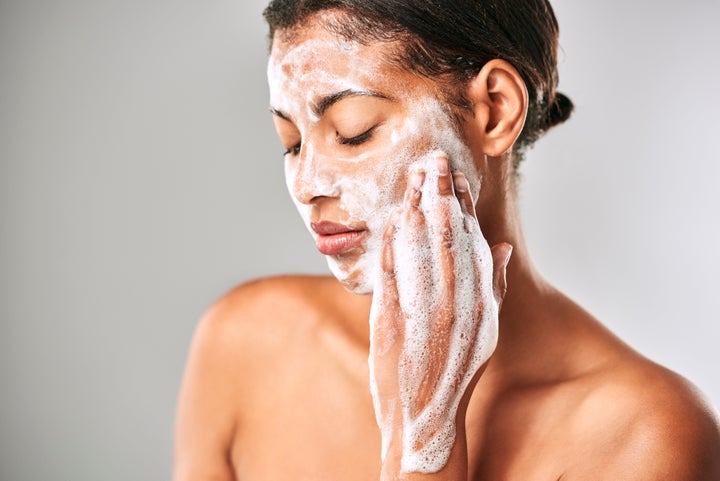
You might have heard about double cleansing as a method to clean your skin at the end of the day and remove hard-to-lift excess makeup. It’s also an essential first step for any facial to make sure your skin is a clean canvas so that your skin care products can do their job.
Start with an oil-based cleanser or balm to dissolve makeup and loosen up sebum in the pores without disrupting the skin’s delicate barrier, said Dylan Mustapich, a New York City-based lead esthetician with Facehaus. Next, go in for a deeper clean with a cream or foaming cleanser. Spend some time massaging the cleanser into your skin, focusing on the T-zone and other oily areas.
“For more normal to dry skin types, I recommend using a cream cleanser that will not over strip the skin, while still effectively removing impurities,” Mustapich told HuffPost Finds. “For oilier and acne-prone skin, a foaming cleanser will get deeper into the pores to clear our excess oil and sebum.”
Here’s how to tell whether what kind of skin you have: If your skin feels tight after you wash your face, you may have a dry skin type, according to Alexandra Serron, a regional trainer with HeyDay. If you see a little bit of shine toward lunch time, you may have oilier skin.
Facialist-recommended doubled cleansing products, below:
2. Balance the skin with some toner
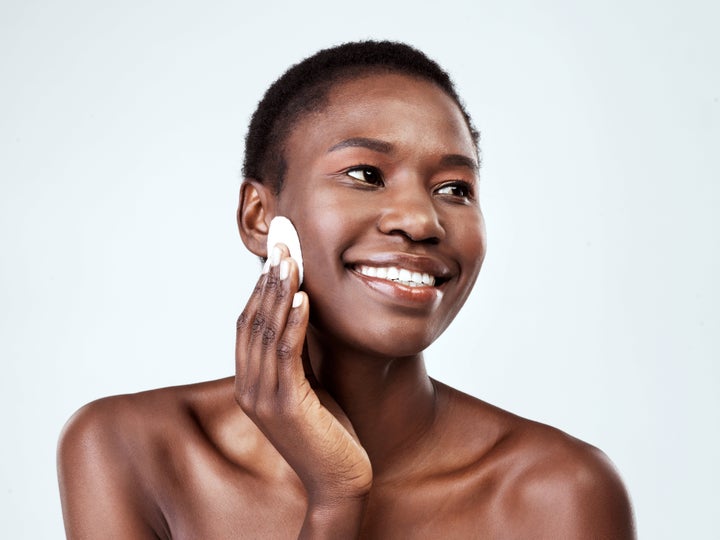
Turns out toner actually does serve a purpose. Toners are used for two reasons, according to Serron. Using one right after cleansing ensures any leftover dirt, makeup and grime are removed. Toner also balances the skin’s pH level, which can be out of whack after using certain kinds of cleansers. Because skin is naturally acidic, toner restores your skin to its natural state, so your skin doesn’t have to work overtime to do it for you. Serron even advises spritzing on toner throughout the day (over makeup is fine) to maintain your skin’s balance.
To use a toner, apply it to a cotton pad (we recommend these washable, reusable cotton pads). Work the cotton pad over the skin, being sure to stay clear of sensitive areas like the eyes and mouth.
Generally, look for toners with ingredients such as salicylic acid, glycolic acid and witch hazel, Serron said. Mustapich, however, prefers hydrating toners and generally tells clients to stay away from old-school astringents with high amounts of alcohol or witch hazel, as they can sometimes dry out the skin too much.
“My favorite [toner] for the past seven years has been this Naturopathica Lavender Honey Mist,” Serron said. “If your skin is more on the oily or acne side, and you want a bit more punch, try using the Image Clear Cell Salicylic Clarifying Tonic.”
We’d be remiss if we didn’t mention the holy grail of toner: Biologique Recherche Lotion P50. This luxury toner is beloved by beauty editors, hailed by estheticians and is so exclusive it requires a login for pricing. A 1.7-ounce travel-size bottle will set you back $27, while a 8.4-ounce version will cost you around $112.
There are seven different Biologique P50 lotion formulas. It’s usually recommended that you book a consultation (they’re complimentary at Rescue Spa) to evaluate which formula is best for your skin.
What’s so special about this fancy French water that allegedly smells kinda funky and can only be purchased from estheticians and spa professionals?
“It has been deemed ‘facial-in-a-bottle’ for good reason,” according to Danuta Mieloch, founder and esthetician at Rescue Spa NYC and Philadelphia. “This incredible product tones, exfoliates, hydrates, and balances the skin — which is a lot of heavy lifting for a single product.”
Two expert-recommended alternatives to P50 that are easy to come by and are more affordable are Naturopathica Lavender Honey Mist (best for dry/normal skin) and Image Clear Cell Salicylic Clarifying Tonic (best for oily/acne-prone skin).
Facialist-recommended toners, below:
3. Exfoliate to slough away dull skin
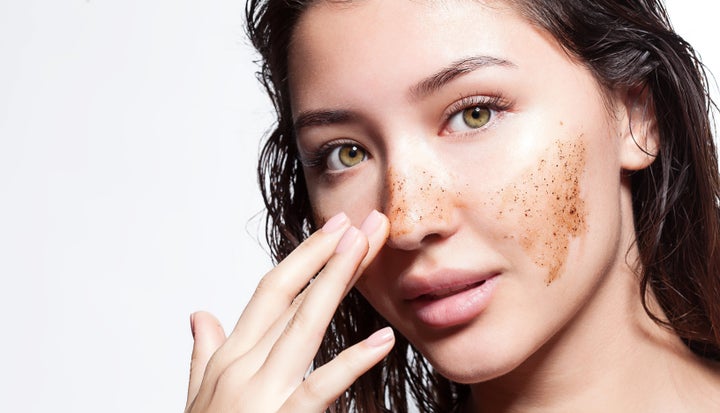
Exfoliation helps bring fresh skin cells to the surface for a healthy, glowing complexion, but you need to use the correct exfoliant for your skin type to keep breakouts and irritation at bay.
You can use a gentle physical exfoliant or a chemical exfoliant with acids and enzymes that eat away at dead skin cells, according to Serron. These types of exfoliants are often less abrasive than the manual, gritty exfoliants you might remember growing up with.
“The world chemical is misleading and seems a little scary,” Serron said. “It simply means the product is having a ‘chemical reaction’ with your skin, similar to a professional peel you’d receive in one of our facials.”
If you’re not sure which exfoliator is best for your skin type, there are a few things to keep in mind.
If you’re dealing with dry patches and excessive flakiness, a scrub might be your best bet since physical exfoliants use small particles to smooth the skin. Just make sure they aren’t overly rough, as this can lead to excess irritation and small tears in the skin.
But people with sensitive skin, sun damage or breakouts would benefit from a chemical exfoliant, Mustapich said. These types of products use alpha hydroxy acids (glycolic, lactic, citric) and beta hydroxy acids (salicylic) to dissolve the bonds between dead skin cells without abrading the skin. They can also improve collagen production and account for hyperpigmentation.
Facialist-recommended exfoliants, below:
4. Steam open your pores
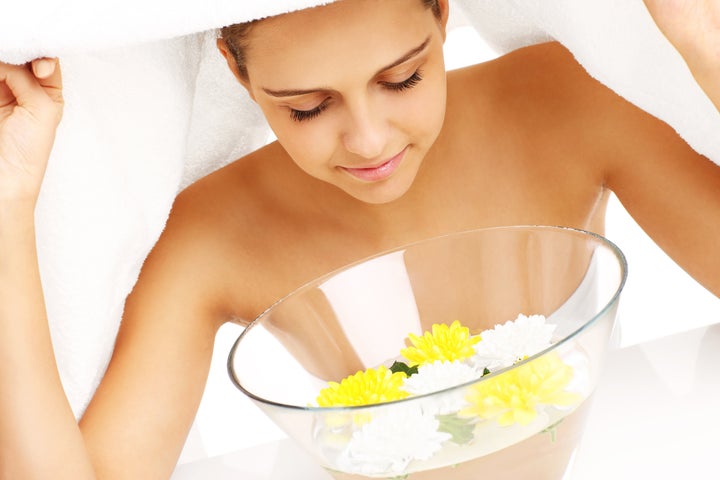
Steam helps soften the skin and allows your products to go deeper, making them more effective. If you have a facial steamer at home, great. If not, no worries.
You can heat up water in a pot or bowl and keep your face over it for 10 minutes, Mustapich said. Throw a towel over your head to keep the steam from escaping and add essential oils or fresh citrus slices for a more luxurious, spa-like experience.
5. Apply a mask — or two
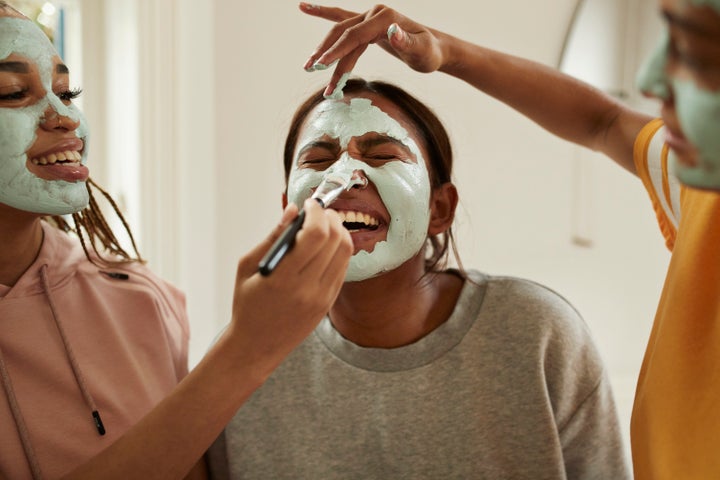
Masks are meant to restore and hydrate the skin, and they help build a healthy skin barrier to keep moisture in and the bad stuff out. It’s no secret they’re also a great excuse to relax and unwind.
When applying a mask product from a jar or tub, be sure to use a spatula or brush to avoid transferring any bacteria into your product, Serron said. Apply a thick layer of the mask onto freshly steamed skin and leave it on for 30 minutes. If you’re feeling especially wild, you can also mix it with a little oil and wear it to bed as an overnight mask.
It’s also a good idea to “multi-mask,” according to Mieloch from Rescue Spa. That means apply a purifying mask to the oily areas (the T-zone is a common one) and a hydrating mask for the dry areas (like cheeks).
“I recommend using at least two masks because most of us have combination skin that responds best to being spot-treated,” Mieloch said.
For dry skin, look for masks made with hyaluronic acid, which is an excellent humectant, drawing and binding water to the skin, Mustapich from Facehaus said. If you’re battling breakouts, opt for a charcoal or clay mask that draws out excess sebum and oil from pores, making them appear tighter and smaller.
“I find clay masks that include salicylic acid are the most beneficial for clearing out stubborn blackheads,” Mustapich said.
Facialist-recommended masks, below:
6. Apply your trusty serums, creams and spot treatments
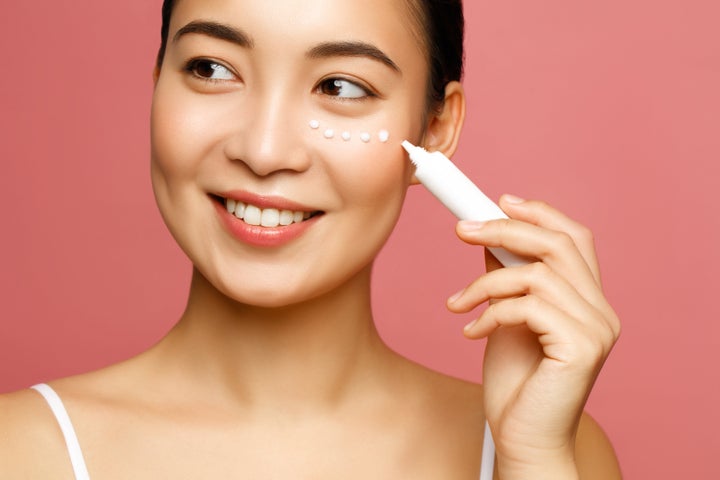
Now’s the time to apply all those special serums and trusty spot treatments to target the places on your face that could use a little extra love.
Mustapich admits she’s a bit of a maximalist when it comes to layering serums, and often recommends two to most of her clients: a hyaluronic acid serum to plump up skin and increase absorption, plus a vitamin C serum for day use or a retinol serum for night use.
“Vitamin C is excellent at mitigating environmental damage from free radicals and is also the gold standard in lightening and preventing sun damage,” Mustapich said. “Retinol increases skin cell turnover, and has tremendous evidence showing its anti-aging benefits.”
Then, you’ll want to apply a peptide-rich eye cream or gel to your ring finger and gently tap around the orbit of your eye and up to your brow bone, the most delicate skin on your face, according to Serron. Dab a little on the nasal folds of the mouth and between your brows to help prevent fine lines and wrinkles.
Be careful not to rub or smear the eye cream, said Ari Williams, lead esthetician at Skin Gym in Los Angeles. Instead, use light tapping movement from the outer corner in to avoid stretching the skin and causing bags.
“If you prefer more low-maintenance, you can always cut up cucumbers, freeze them and apply a few times a week,” Williams said. “Very old-school, but surprisingly effective for puffiness.”
Facialist-recommended spot treatments, below:
7. Massage it out
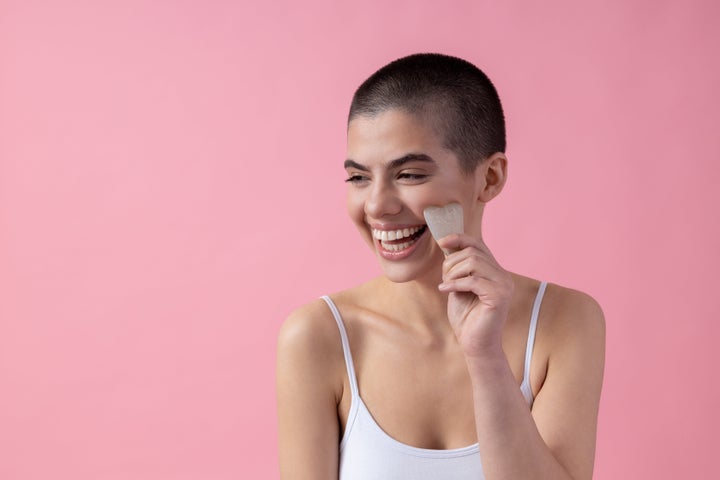
The massage might be the most relaxing part of your facial, but it’s also full of benefits for your skin
Massaging the face is like a mini workout for the skin, according to Williams from Skin Gym. It stimulates cellular activity, which helps collagen production and creates lymphatic drainage to reduce puffiness in the face. It can even help with TMJ pain — discomfort along the jaw, which is a common complaint from Skin Camp clients.
“The key to a great at-home facial massage is to always remember up and out,” Williams said. “Up for collagen and out for draining to the lymph nodes.”
Do three to five slow strokes with a roller tool, using light pressure for lymphatic drainage and reducing puffiness. Apply more pressure for tension release, Williams said.
It’s important that your skin is properly lubricated before dragging a facial roller, gua sha or even fingers across your face, according to Serron. Spritz your face with a mist to help your tool slip and glide. You can also warm up a fews drops of facial oil in your palms and pat it into your skin before massaging.
Facialist-recommended massage tools, below:
8. Moisturize to lock everything in
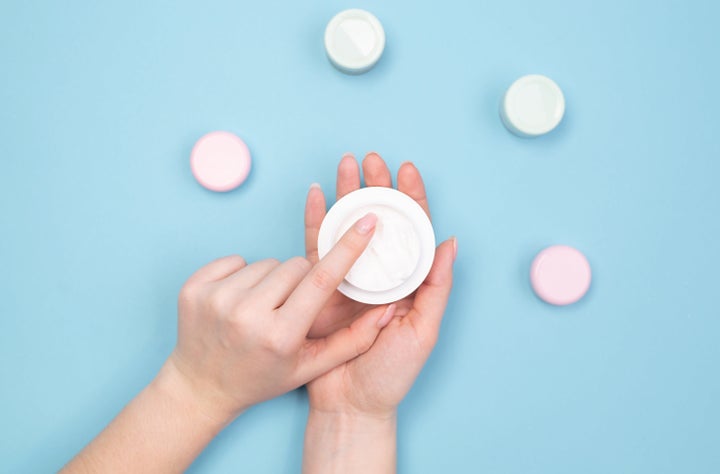
The most important step during a facial — and for skin care, generally — is to moisturize. You’ll hydrate your skin and get a dewy glow. Moisturizer also creates a physical barrier to prevent moisture loss, according to Mustapich at Facehaus.
“I often recommend [moisturizers] that include antioxidants for some extra protection from free radicals, and because they work synergistically with vitamin C,” Mustapich said. “Antioxidants are also effective at lightening up pigmentation from the sun or past breakouts.”
Facialist-recommended moisturizers, below:
9. Don’t forget the SPF
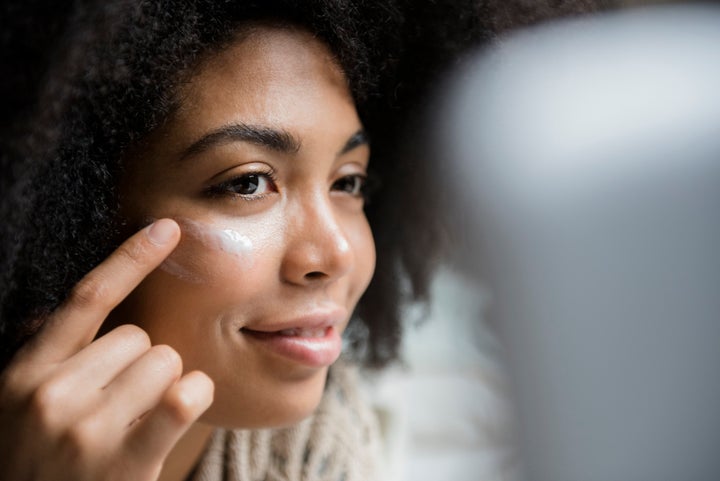
Last — but certainly not least — is SPF. In fact, UV damage is the No. 1 reason for skin aging, according to Serron.
“UV rays are still harmful when filtered through your windows,” Serron said. “And some say blue light from computers and phones can also be damaging.”
Exfoliating and using certain products can make your skin extremely sensitive to the sun. Mustapich recommend using a sunscreen product with a minimum SPF 30 and reapplying as directed. Use a mineral sunscreen made with zinc oxide if you have sensitive skin.
Even if you’re spending a lot of time indoors, you should apply an SPF every single day.
Facialist-recommended SPF skin care, below:
Still want more guidance? Below we’ve rounded up all of experts’ recommended products for an at-home facial in one easy-to-browse list.
Take a look:
